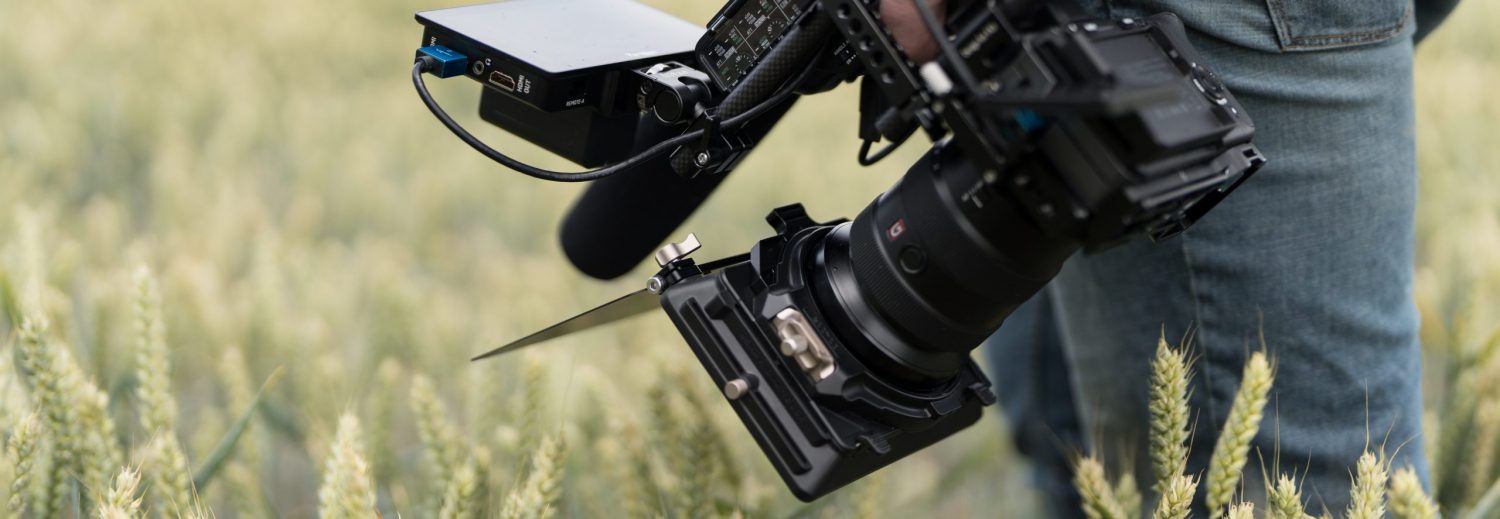Pluraleyes for Final Cut Pro
Note: PluralEyes was purchased by Red Giant Software since this article was written so many of the links to singular software no longer work.
One of the challenges that faces us from time to time is working with either multiple cameras or with footage where the sound has been recorded off camera – known as dual system sound. In the past whenever I’ve had to work with multiple cameras or dual system sound I’ve used the classic clapperboard approach where each take is marked in with a shot call and an audio/visual clap from a clapper board, albeit on the iPhone recently!
Once at the editing stage this proves invaluable because if you’re creating multiclips or even just want to sync up footage with audio recorded on a a separate recorder you need to have a reference point to get everything in line and perfectly synced.
I’ve been working on a project recently that involved shooting interviews on a pair of DSLR’s and recording sound separately on a Zoom H4n. What I tend to do in this situation is record the audio for the interview non stop, ending up with one long master audio track. The cameras on the other hand are not recording constantly, they get moved around during the interview to add some variation and because of the 12 minute recording limit on DSLR’s are often just stopped and started again during the moments when the interviewee is having a pause.
In this situation using a clapper can be a bit of drag, especially if your working alone, it can also be quite distracting for the interviewee as they can feel more pressured. Working with two cameras and dual system sound is something I can just manage on my own, but having to clap in the shots is one part that I can really do without.

On this recent project I decided to try out Singular Software’s pluraleyes plugin for final cut pro. What pluraleyes does is analyse any audio tracks in a sequence and align everything accordingly. It does this by looking at the waveforms from each audio track and adjusting it’s position to align it with similar waveforms found in the other tracks – all very clever!
before we go to much further have a quick watch of the video below in which Bruce Sharpe of Singular Software describes the basic operation of pluraleyes. Press the monitor icon to see the video full screen.
As you can see it doesn’t get much simpler than that! Of course in the example above there’s only one track from each camera and getting everything synced up should be a fairly straightforward, if time consuming task. The project I’ve been testing pluraleyes out on is a lot more complicated because I’m working with multiple takes from each camera and audio files that have no video associated to them. I’m also using Final Cut’s multiclip feature during the edit. So how does pluraleyes handle that?
Over to you Bruce!
Clever eh!
There are of course a few things to remember when shooting if you’re planning to use pluraleyes for syncing. Firstly each camera must record a usable reference audio track. If you don’t record audio with the video pluraleyes will not able to sync it so it’s really important to make sure that each camera is getting usable audio.
In my tests I’ve found that even the built in mics on my 5D & 7D have worked for interviews when there’s not too much ambient noise but your much better off fitting something like a Rode video mic so that background noise is more isolated and you’re getting a more defined audio reference.
Another thing that I’ve noticed is that for some reason the audio clips from the Zoom are very slightly too long and cannot be synced throughout an entire sequence unless they have a 99.9% speed change applied to them in final cut. This is a bit strange because my tests were done with both the 5D & 7D shooting at 1080/25p so there should be none of the strangeness that could happen when the 5D was shooting at 30 fps.
Anyway, the 99.9% trick seems to work a treat, I just apply it to the audio from the zoom before running pluraleyes and everything generally lines up perfectly. Pluraleyes also has a few more tricks up it’s sleeve to help with problematic files. In the preferences you can enable various options that make the plugin work a little bit differently.
Clips are in chronological order: If you’ve shot an event or other project where you know that all of the clips should be aligned based upon the order they were shot you can enable this and it helps pluraleyes with the processing should you run into any difficulties with getting all of the clips synced up.
Level audio: Some of your clips might have very low levels on their audio tracks which makes pluraleyes life a bit harder. Enabling this option allows pluraleyes to level the audio levels during it’s analysis to help with the processing.
Use markers: If you get a problematic clip that won’t sync up you can mark the clip and the approximate point in the sequence where it should go and then with this option ticked pluraleyes is much more likely to sync it correctly.
Try really hard: This simply makes the plugin try a lot harder to sync up all the clips. It makes pluraleyes take 5 – 10 times longer but it’s handy if you have a project that’s proving extra tricky for pluraleyes to sync up.
After using pluraleyes for a couple of weeks now it’s proved invaluable, it saves so much time and hassle at the shooting stage with not having to worry about marking shots in, and as you can see from the examples above you can also save loads of time and effort during the editing stage. I’d say that pluraleyes is a must have for anyone shooting dual system sound or dealing with multiple cameras in Final Cut.
Cost wise a pluraleyes licence will set you back $149. If you’re paying in the UK then you’re looking at around £100 plus VAT. If you’re interested in buying a copy then click here to visit the online store.
There’s loads more tutorial videos to watch over at the Singular Software website if you want to find out more about pluraleyes and how it handles various situations.
Update: Thursday 1st July 2010
I’ve just updated to the latest beta version of PluralEyes (1.2.3) and it adds the ability to sync any sequence from any project rather than having to name one of your sequences pluraleyes. Very handy!

Update: Thursday 21st October 2010
Pluraleyes 1.2 has now been officially released and contains the following new features…
* You can now select the project and the sequence to be synced
* New option to create a Single output sequence
* Replace audio feature for dual-system audio
* Creates merged clips in a bin in the Browser if the Replace audio option is selected
* Respects settings for locked/enabled, allowing for easier “touch ups” of syncs
* Stores temporary files in a subfolder for easier management
* More online help for status and error messages
* Use markers now provides a stronger hint as to how to sync
* Try really hard is more reliable
* Improved multi-clip handling
* More robust handling of large projects for Final Cut Pro 7
* Several bug fixes











Hi Paul,
I got this error after running Plural Eyes:
“Error message: This project contained a sequence that could not be opened. No sequence preview preset file o: codec could associated with this sequence type”.
Any clue how to fix this?
Thanks in advance!
Best,
Sjors Ruijter
You can also try Woowave Sync Pro. You may qualify for free license.
Hello, I have a quick question; I watched the second video from the top that’s on this webpage and i compared it to what i have to do. I was given footage from a wedding shot using 2 cameras canon 5d mkII. About 1 hour was shot with each cam so there are about 40-45 clips per cam. When i used pluraleyes to sync the footage from both cameras, this happened: it took about 4 hours to sync. after the sync was done, 28 green sequences came up on the browser window (going from 001 to 028) on the name of each sequence it says synced at the end. You however, have only 1 green sequence that says pluraleyes001synced..i have 28!! and i don’t know why. Also, after the sync was finished, I don’t get a sequence like you do, instead, i get a sequence with a bunch of clips that says, “russian wedding 000 unsynced”, but as i said already, i also got the other 28 synced sequences. So my question is this, is it supposed to be like this? was there something wrong with the pluraleyes syncing? Honestly, i don’t know where to go from there. Any help would be extremely helpful!, thank you.
Hi Diego. How successful PluralEyes is depends in quite a few factors including and most importantly the quality of audio recorded on the cameras. If you need help with that project then I’d recommend heading over to Singular Software’s user forum where I’m sure somebody can help. I’m afraid I use neither FCP or PluralEyes any more so I can’t really help much.
http://www.singularsoftware.com/forum/index.php
Regards
Paul
Nice blog, Paul.
Just a comment on the workflow of recording one long H4N file. I try not to do that, but ever so often I look and realize that I have all of that valuable sound on one file. I always cross my fingers as I press stop, just in the hopes that the file completes it write, and I don’t lose the hole thing. This could be a misplaced fear… heck I’m probably always overly anxious when rolling, but I just feel safer cutting and rerolling sound more often.
I rarely find somebody more paranoid than myself :)
The trouble is the risk of not pressing record once would be much higher than the file not being written for me, especially if I’m shooting on my own using two cameras and off camera sound. I guess there’s always going to be a certain amount of risk.
Thanks for posting this Paul – looks like a great resource!